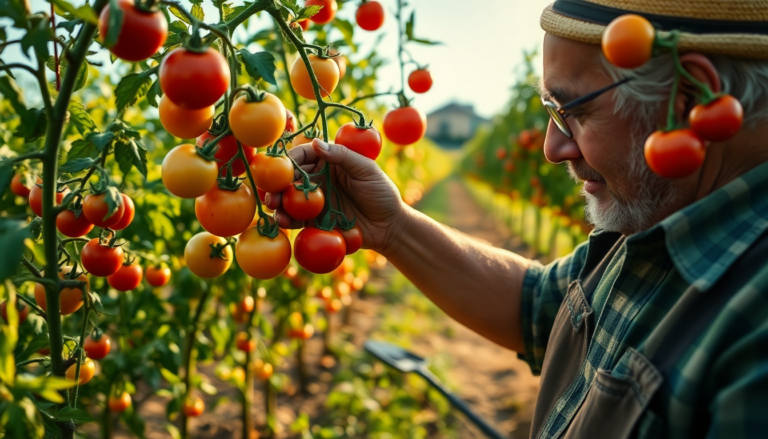Argomenti trattati
Imagine sinking your teeth into a perfectly ripe tomato, warm from the sun and bursting with flavor. It’s a taste that simply can’t be matched, especially when you realize you grew it yourself. But let’s be real: growing tomatoes isn’t just a matter of tossing some seeds into the ground and hoping for the best. There’s a bit of finesse involved, and with some practical advice, you’ll be on your way to a thriving tomato garden that could make even the most seasoned gardener envious.
Starting your tomato seeds indoors
So, you want to kick off your gardening journey with tomatoes? Start by bringing those seeds indoors in early spring. Why inside, you ask? Well, tomatoes are a bit on the sensitive side, especially when it comes to frost. As Craig LeHoullier, an experienced gardener and author of Epic Tomatoes, points out, nighttime temperatures should be above 32 degrees Fahrenheit before these little beauties can venture outdoors. It typically takes about two months for seeds to mature into plants ready for the big world outside.
Check your local temperatures and backtrack two months to pinpoint when to start your seeds. Once they sprout (and trust me, it’s a magical moment), ease them into direct sunlight gradually over a week. This helps them grow strong and sturdy instead of leggy and weak. I’ve found that a sunny windowsill can work wonders, but if you’re lacking sun exposure, an artificial grow light is a game-changer.
Transplanting seedlings and setting up your garden
As your seedlings grow, they might need a bit more space to stretch their roots. Transplant them into larger containers—aim for 3 to 4 inches in diameter—and bury them deep, up to their top leaves. This encourages additional root growth along the stem, which can produce a more robust plant. When the weather finally warms up and your seedlings hit that 6 to 8-inch mark, it’s time for the big move to your garden or outdoor pots.
Now, let’s talk space. Tomatoes love company, but they also need room to breathe. Make sure to space them out so their leaves don’t touch. Good air circulation is key to warding off diseases (and trust me, you’ll want to avoid those). And if you’re into the idea of vertical gardening, stakes or cages should be put in place now to support your plants as they grow tall and proud.
Watering and feeding your tomato plants
It’s all about finding that sweet spot with watering—keeping your tomatoes moist but not soggy is crucial. I always make it a habit to water at the base of the plant to minimize moisture on the leaves; this can help prevent nasty foliage diseases. If you’re growing them in a garden bed, water until the soil feels dry an inch below the surface. For container plants, aim for when water begins to trickle from the bottom.
Once you’ve settled into a routine, it’s time to feed your plants. Start with a balanced fertilizer designed for tomatoes and vegetables. If they’re in the ground, every few weeks will do; if they’re in pots, a weekly feeding works wonders. You’d be surprised how much a little nutrition can boost growth.
Monitoring your plants for problems
Keep an eye out for any signs of distress. A wilting plant is generally a cry for help—often indicating that it’s thirsty. If you let them wilt too much, you risk blossom end rot, which is not only unsightly but can ruin your harvest. If you notice black patches on the bottom of your tomatoes, it’s time to remove any affected leaves to prevent further issues. And trust me, it’s a lot easier to prevent problems than to fix them later on!
Harvesting your tomatoes
The moment you’ve been waiting for: harvesting! When your tomatoes start to ripen, pick them when they’re about half ripe or more. This reduces the chances of cracking and makes them less appealing to hungry critters. If rain is on the way, consider picking any ripe cherry tomatoes and larger ones that are halfway there so they don’t get knocked off their vines. Slice them up and toss them into salads, burgers, or just enjoy them fresh—your taste buds will thank you!
In the end, growing tomatoes can be a delightful, if sometimes challenging, adventure. With a little patience and attention, you can cultivate a garden bursting with flavor. I remember the first time I tried my hand at growing tomatoes; it was messy, a bit chaotic, but ultimately rewarding. So grab your gardening gloves and get started—you’re in for a treat!

